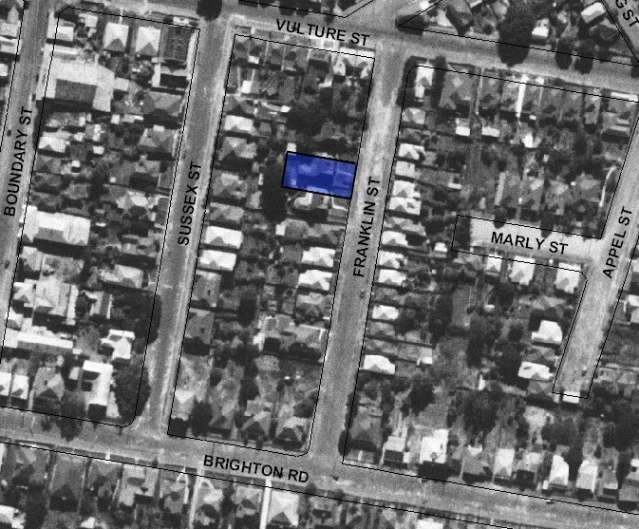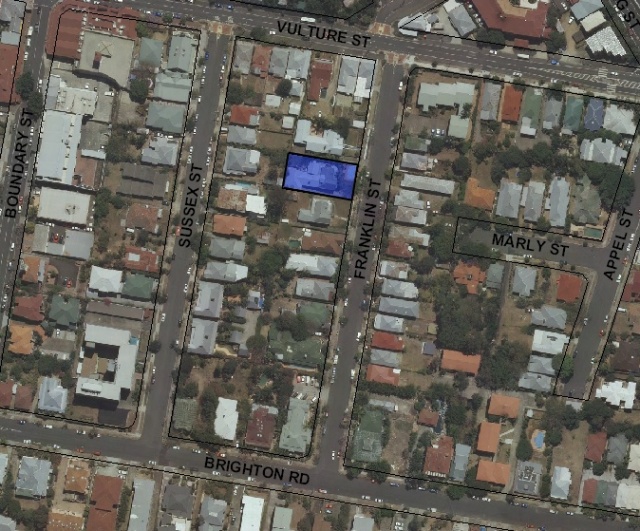Addresses
Type of place
House
Period
Victorian 1860-1890
Style
Queen Anne
Addresses
Type of place
House
Period
Victorian 1860-1890
Style
Queen Anne
‘Allawah’ is one of three identical two-storey homes constructed in Franklin Street in 1888 for the Honourable Hedley Strutt, Chief Clerk in the Office of the Civil Service. The houses were built as investment rental properties for respectable middle class tenants and together make a fine contribution to the streetscape.
Lot plan
L41_RP11750
Key dates
Local Heritage Place Since —
Date of Citation —
Construction
Roof: Corrugated iron;Walls: Timber
Criterion for listing
(A) Historical; (D) Representative; (E) AestheticInteractive mapping
Lot plan
L41_RP11750
Key dates
Local Heritage Place Since —
Date of Citation —
Construction
Roof: Corrugated iron;Walls: Timber
Criterion for listing
(A) Historical; (D) Representative; (E) AestheticInteractive mapping
History
Allawah is one of three identical two storey homes in Franklin Street which were constructed as investment rental housing. This group of houses was built in 1888 for respectable middle class tenants, reflecting the image of this part of South Brisbane as a desirable residential area for the middle class at that time.
Thomas Grenier obtained this land from the Crown in 1856 through a Deed of Grant and immediately began to subdivide it, selling the two roods and 16 perches comprising these three blocks to William Seagrave in 1876(1). The land had other subsequent owners, none of whom built upon it until the Honourable Hedley Strutt, Chief Clerk in the office of the civil service(2) acquired the land in 1888. He immediately had the three homes built and by the following year, had tenants occupying each one.
The first tenant of Caroora, as the home was originally named, was the Reverend S. Peel and next was Archibald Meston, who later became protector of Aborigines. In 1892 both this house and Merkara beside it were unoccupied, perhaps due to the financial hardship caused by the 1890s depression.
In 1899 Strutt sold Caroora, subdivision 41, to William George Henderson, a Queen Street dentist, who also rented the house out. In 1900 the house was rented to Charles Watson Copeland, and his wife Emily. The Copelands continued to rent the property until 1916 when they purchased it from Henderson. Following Charles Copeland’s death in 1924, Emily remained there until her death in 1931. The property has been passed to a succession of owners since that year.
Description
Allawah should be regarded in the context of its neighbours 21 and 11 Franklin Street, as all three houses would have originally been virtually identical. Each has a two storey projection topped by a mansard roof on the left hand side facing the street, the lower level of which has a bay window with a curved roof. The longer section of the building parallel to the street also ends in a mansard roof but has a small gable dormer in the attic above the verandah. The end of this section at the upper level has a Juliet balcony with a curved awning supported on posts. The verandah features a small gable roof beside the projecting rooms and over the entry. A row of steps leads directly up to this. The remaining verandah roof is curved and supported on paired verandah posts. Timber brackets appear under the barge boards at the end of each mansard roof. Allawah has been the best maintained of the three houses, and is mostly original apart from its colour scheme. All its timber lacework and bracketing seems intact and the broad arch under the entry gable remains.
Statement of significance
Relevant assessment criteria
This is a place of local heritage significance and meets one or more of the local heritage criteria under the Heritage planning scheme policy of the Brisbane City Plan 2014. It is significant because:
References
-
Titles Office Records
-
Post Office Directories.
Citation prepared by — Brisbane City Council (page revised September 2020)


